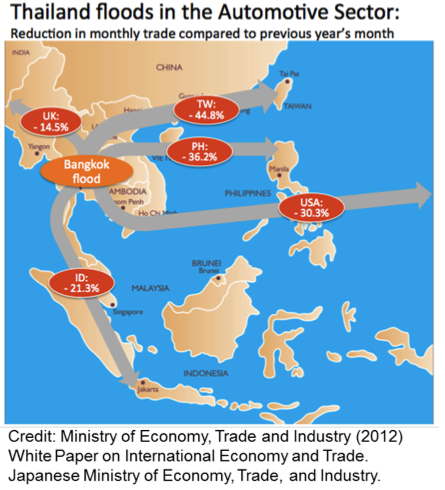The risk of natural disasters is not limited to the developing world, however, as the Missouri River floods of 2011 showed. Damages from this event totaled anywhere from $3 to $5 billion dollars.
Historically, floods not only impact production, but can affect transportation systems. The Mississippi River flood in May 2011 resulted in the suspension of barge traffic. The New York Times estimated that the money tied up in transportation costs can be $300 million a day in for the entire river.
Neither public nor private sectors effectively mitigate the impact disasters have on the supply chain. The private sector, especially, does not always consider natural hazards and disaster risks in their decision-making process. As a result, the private sector’s vulnerability has the capacity to impact the entire economy. CWC researchers are finding ways for businesses to reduce vulnerability to supply chain risk while maintaining their competitive advantage.
CWC researchers predict flood incidence locations from a long-term climate perspective and evaluate flood risk using atmospheric dynamics. Findings from this project will help us understand, predict and map indirect losses. Using empirical and mathematical models, this study seeks to investigate the vital components of resilient supply chain networks that are not vulnerable to flood risk. Insurance mechanisms of supply chain networks are being analyzed to further advance both conceptual and technical development.
Additional resources: See the background paper prepared by the CWC for the United Nation’s Global Assessment Report on Disaster Risk Reduction 2013
Haraguchi, M. and Lall, U. 2012. Flood Risks and Impacts: Future Research Questions and Implications to Private Investment Decision-Making for Supply Chain Networks. Research Paper prepared for the 2013 Global Assessment Report on Disaster Risk Reduction. Geneva, Switzerland: United Nations Office for Disaster Risk Reduction.

